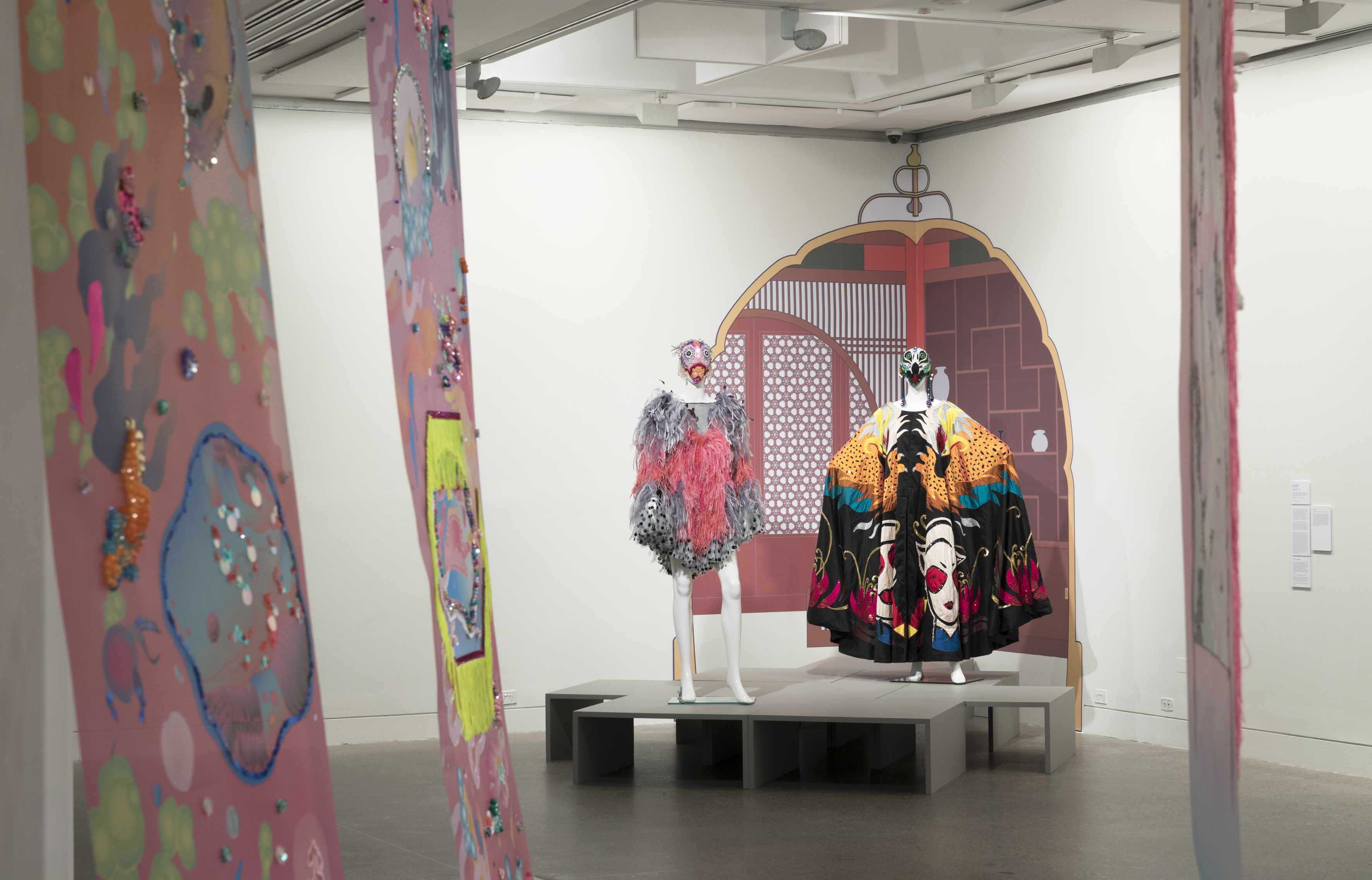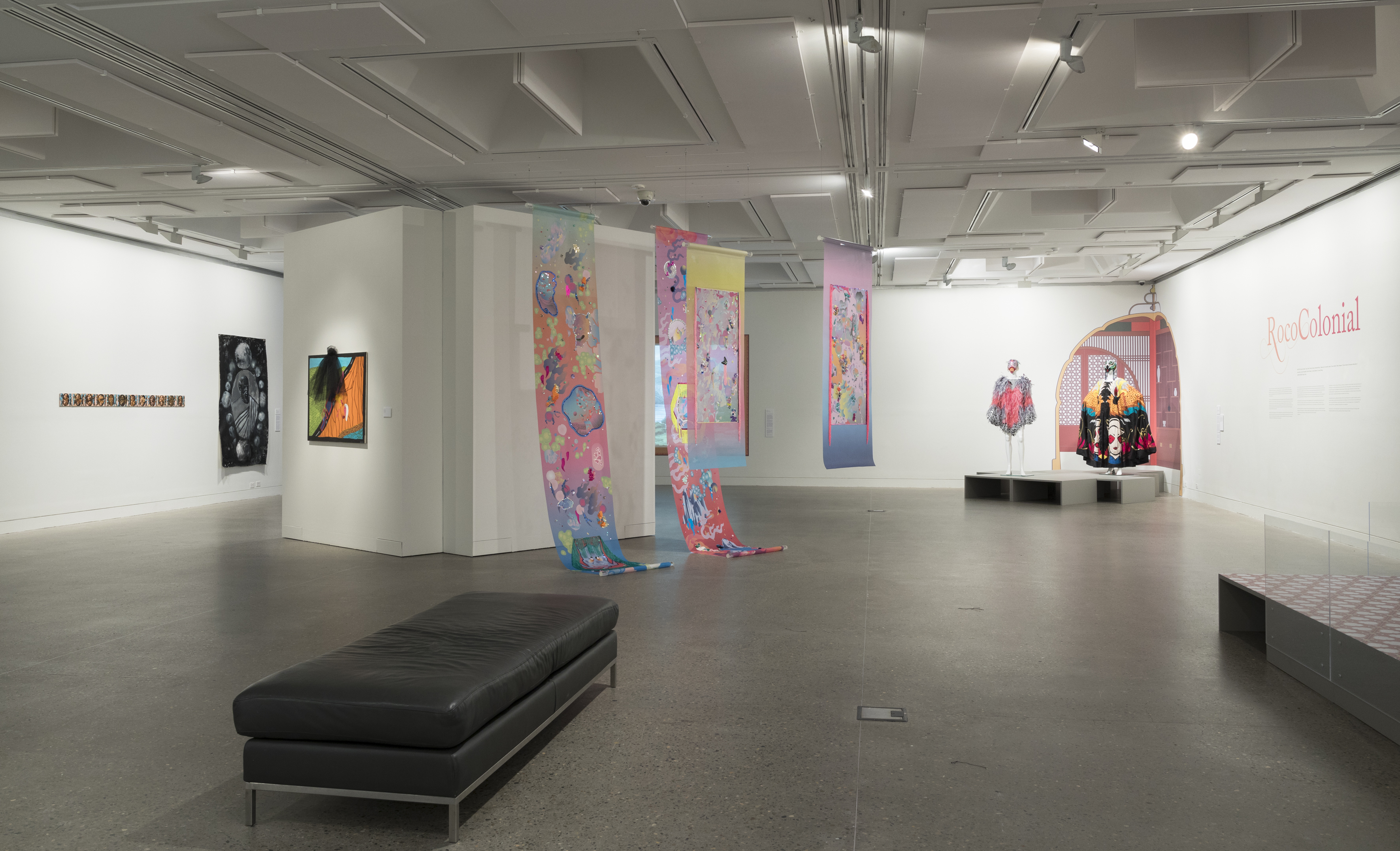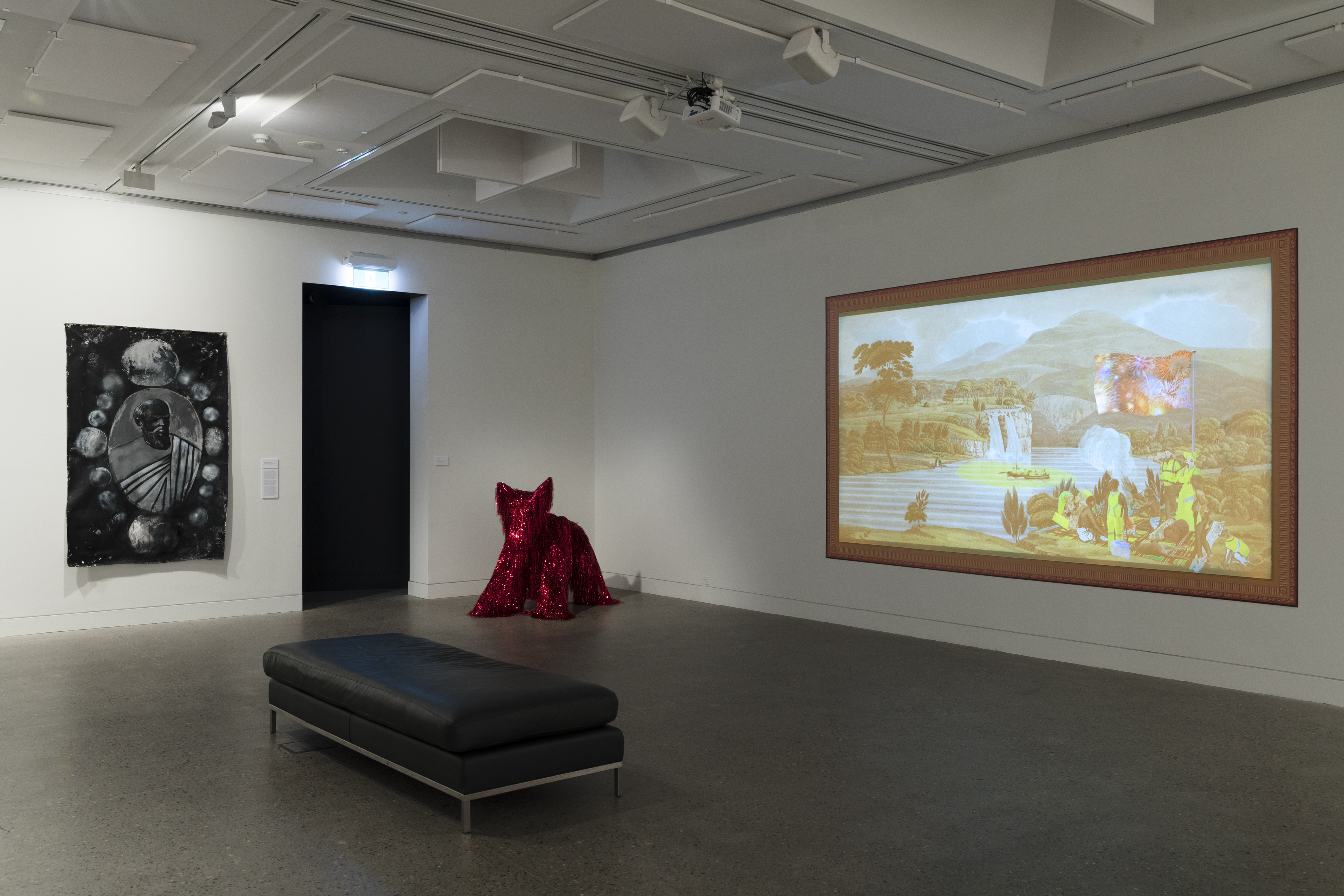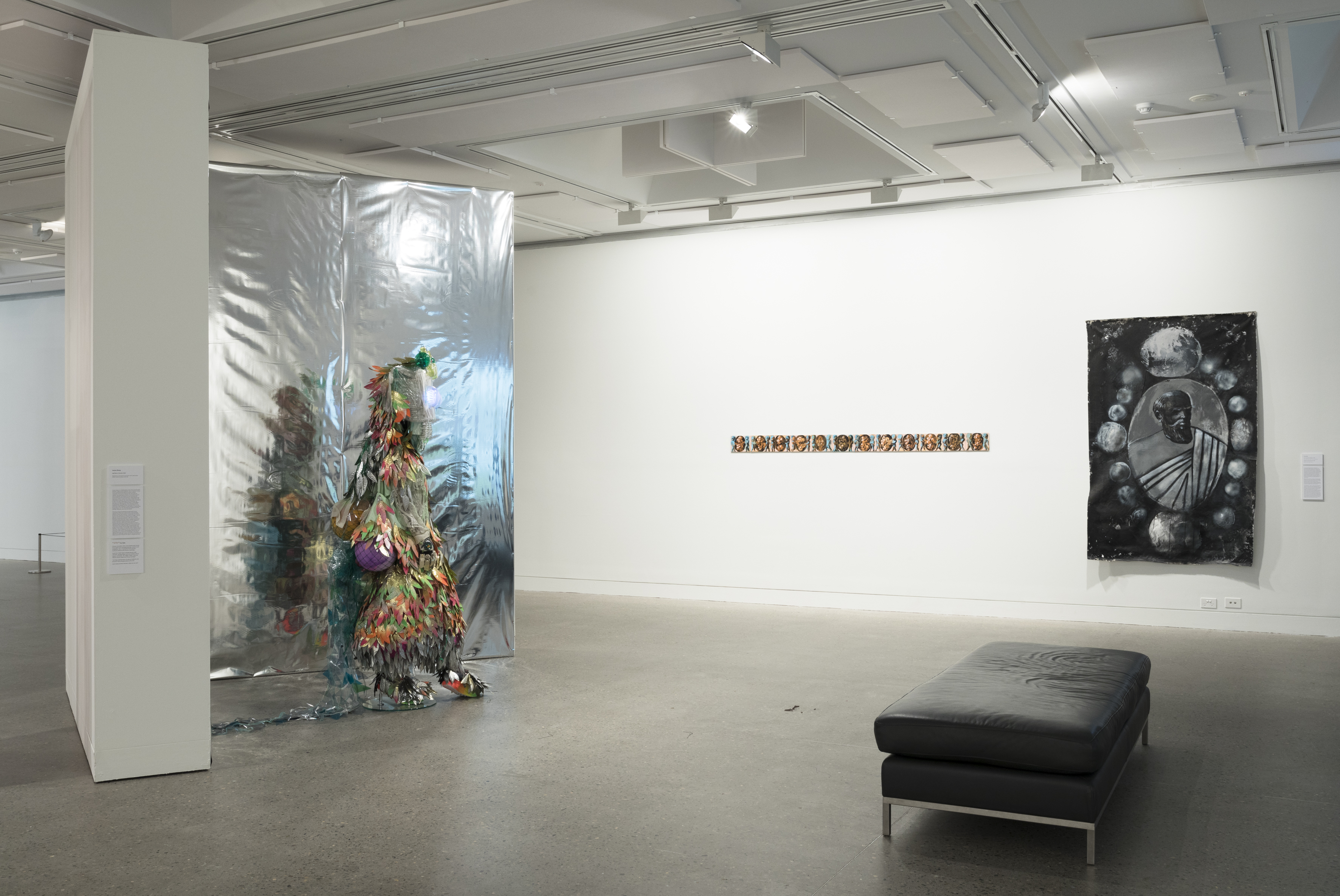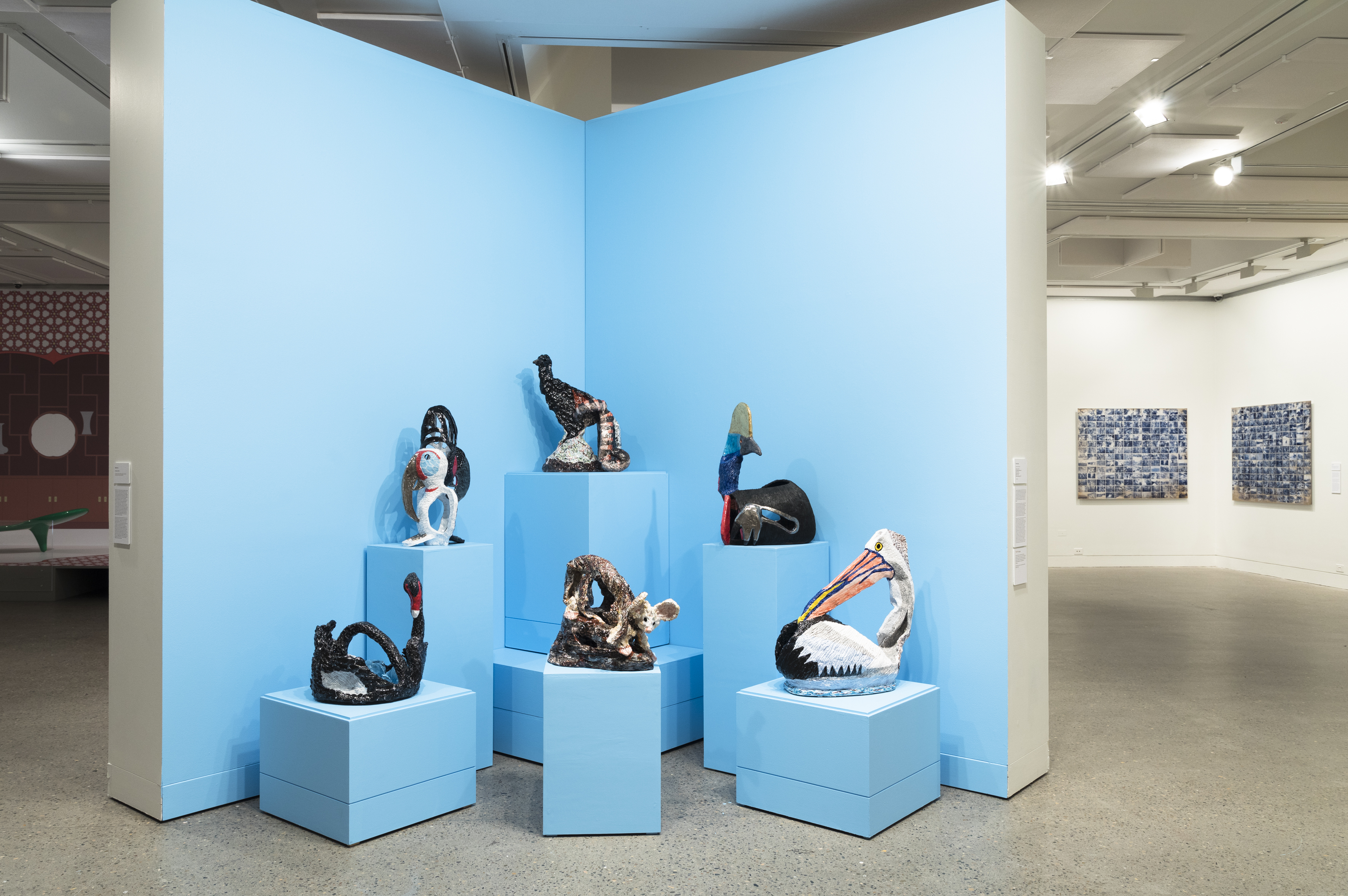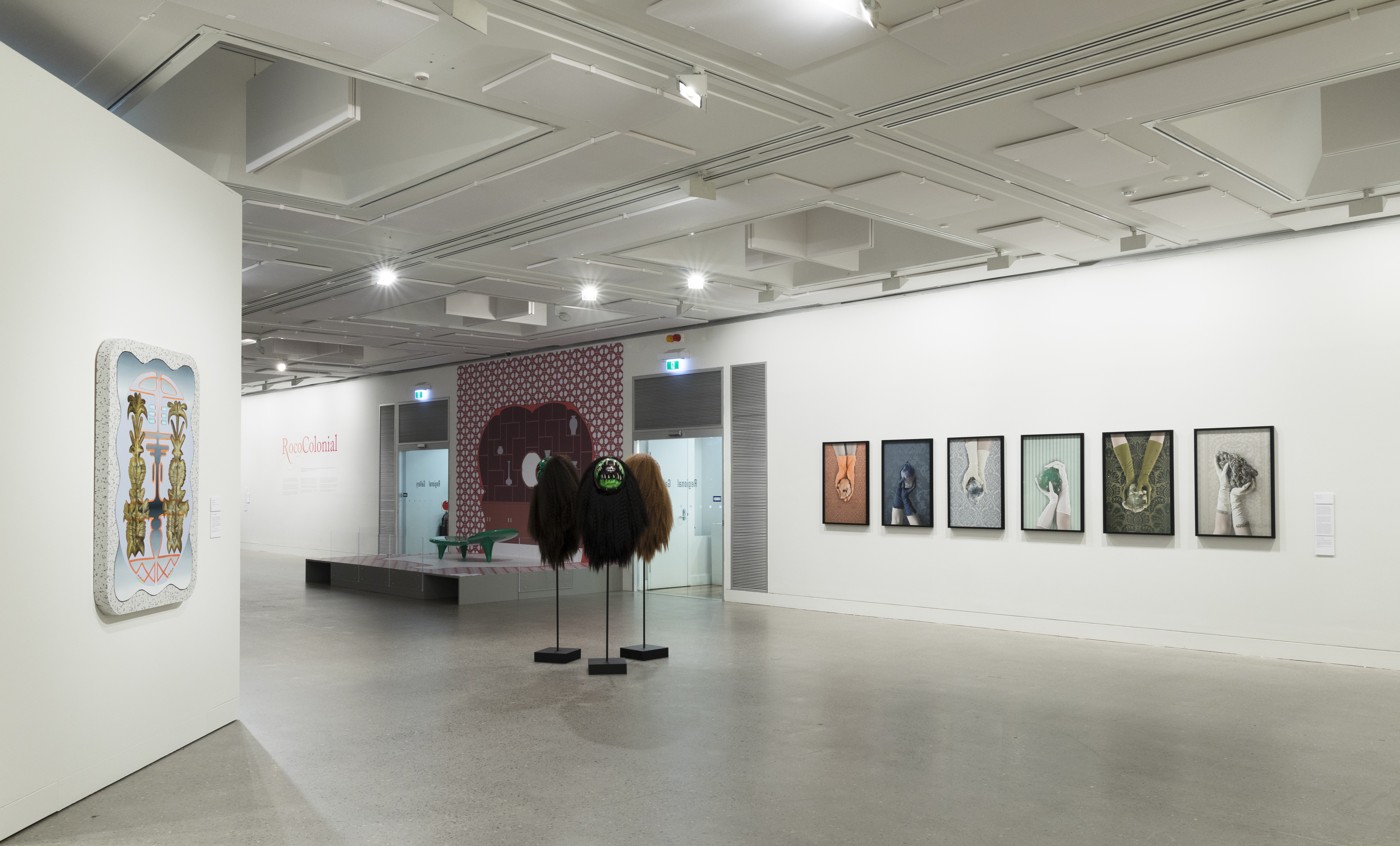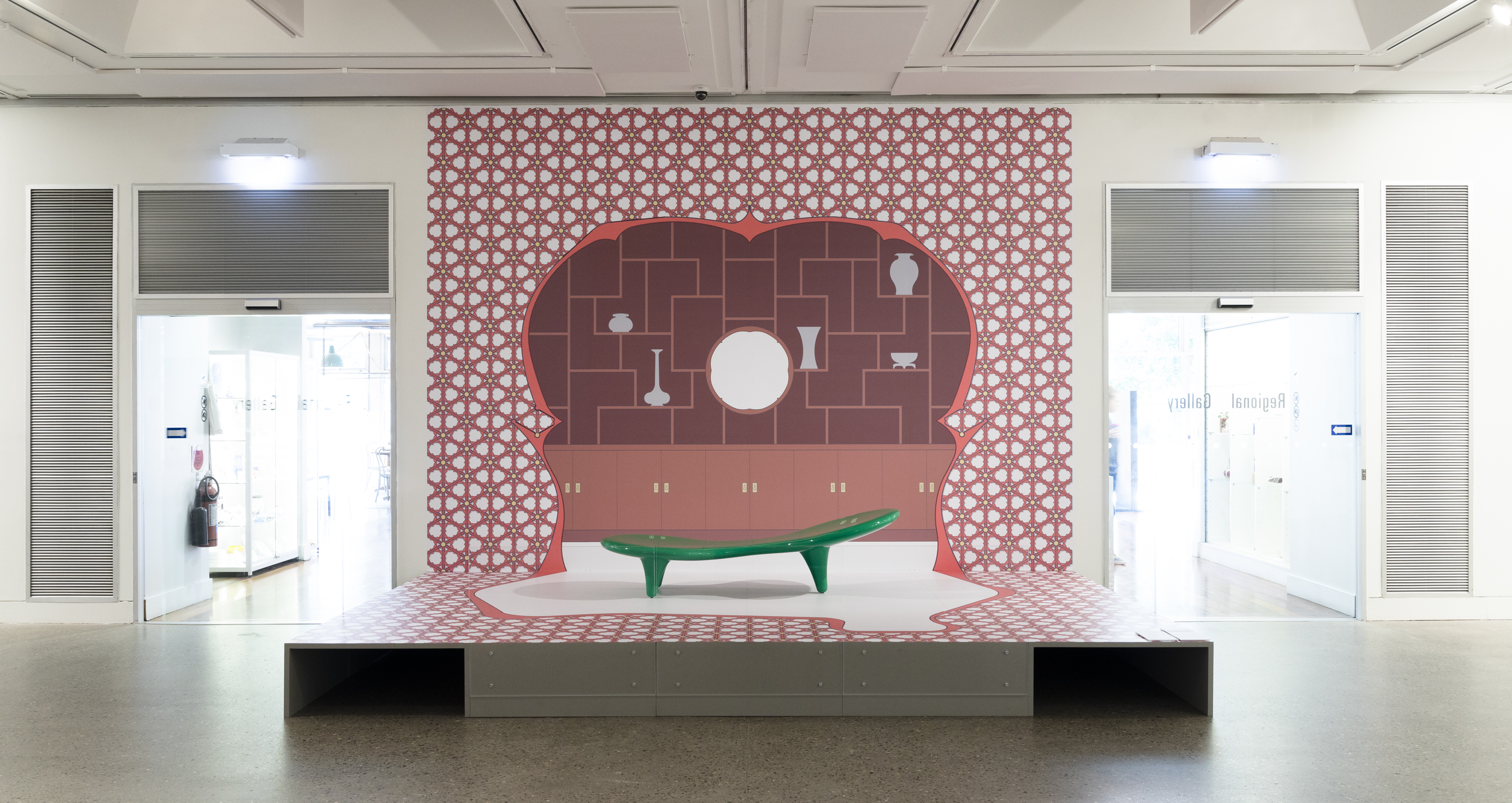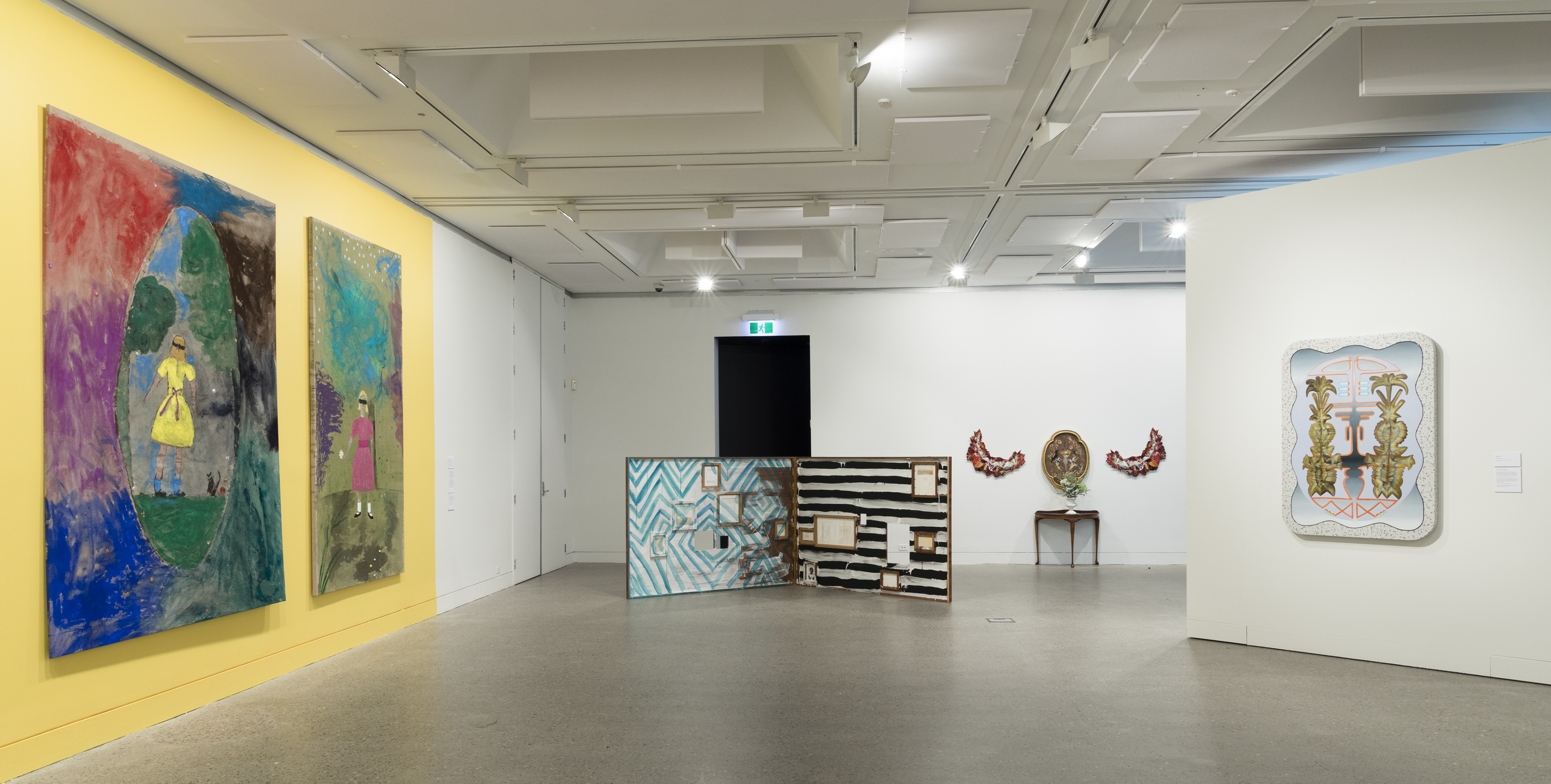4 May 2019 to 30 June 2019

Image: Belem Lett, Civilisation 2018, oil on aluminium composite panel.
Rococo and Colonial are often considered to be disparate, undisputable categories that neatly divide periods of time. This separation offers little opportunity to consider parallel histories - how similar or different things might be happening elsewhere or at the same time. RocoColonial was an exhibition that examined the overlap between Rococo and Colonial and begins by acknowledging that both can be intrinsically related and link Australia to a wider, speculative world of multiple, concurrent histories.
The Rococo, a fluid, highly ornamental and ambiguous style that first appeared in France in the 1730s, articulated a comprehensive approach to the unity of art and design. The style incorporated sculpture and painting and introduced entirely new categories of furniture such as the chaise lounge, while carpets, ceramics and wallpaper contributed to sumptuous interior spaces. Derived from the French term rocaille, Rococo was initially applied to a form of shell and rock garden ornamentation but later became closely associated with Chinoiserie, reflecting the expanding trade with East Asia and the onset of now ubiquitous world-wide production and supply chains.
Australia’s colonial period began with the arrival of an English garrison and several hundred convicts. Artists of this time were fascinated with the exotic flora and fauna combined with a romantic and idealised view of pioneering life. This new world, far removed from the refined cultures of Europe, offered an opportunity to expand British colonies yet has had a lasting and devastating impact on Aboriginal people which resonates today.
RocoColonial allowed formal associations and historical coincidences to pass backwards and forwards between the slippery stylistic classification Rococo and the vexatious period term Colonial.
Contemporary scholarly responses to the period have begun to acknowledge that behind the façade of affected elegance lurked both an anxiety and a deeply troubled expectation of impending cataclysm. Then as now, issues of globalisation, accelerating inequality and the systematic abuse of power by a ruling elite were threatening the established order of things.
Coincidently, today many contemporary Australian artists are using similar approaches to question the political, cultural and economic realities of our time. RocoColonial featured artists and designers, who in their varied practices are destabilising the dream of Australia Felix (the lucky country) and whose material and conceptual language opens up the paradigms of the Rococo and Colonial to contemporary reinterpretation and re-engagement.
Artists
Brook Andrew
Tony Clark
Peter Cooley
Deborah Kelly
Belem Lett
Jennifer Leahy
Danie Mellor
Marc Newson
Técha Noble & Romance Was Born
Joan Ross
Justin Shoulder
Esme Timbery
Jenny Watson
Louise Zhang
Cartouches: Renjie Teoh
View the exhibition catalogue below.
| RocoColonial was a major artist-initiated project by Gary Carsley and presented by Hazelhurst Arts Centre in partnership with Bathurst Regional Art Gallery. |
|---|

